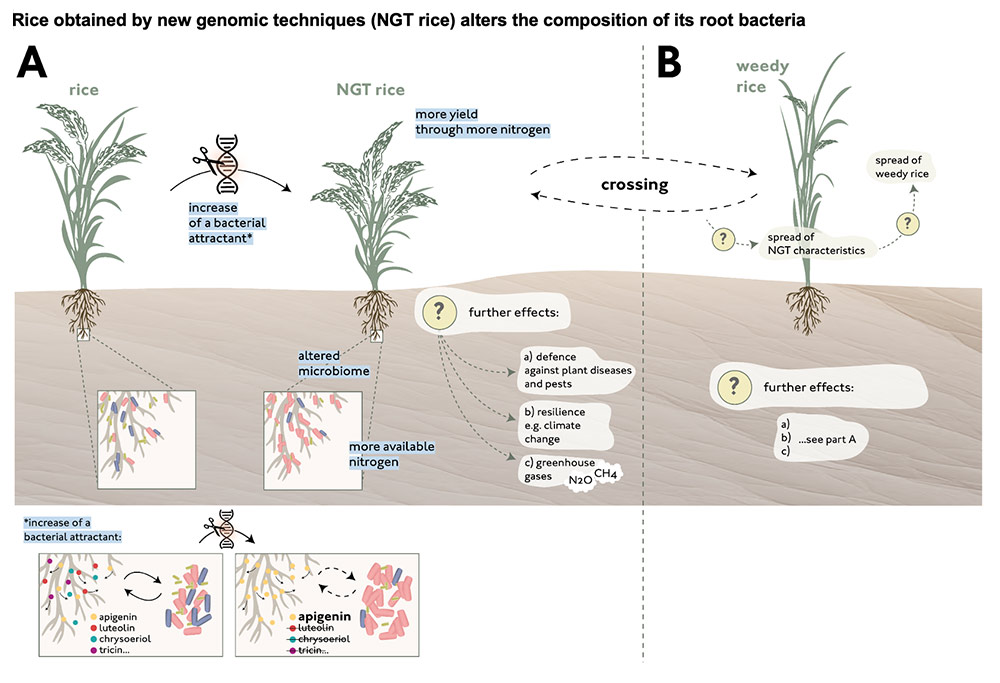A) Many different microorganisms colonise the roots of rice plants and are important for both the nutrition and health of the plants. This is also referred to as the plant microbiome.
In the example given above, the application of new genetic engineering (NGTs) lead to an NGT rice with traits that are unknown from conventional breeding, and which could perhaps never be achieved using conventional breeding methods. The NGT rice produces an increased amount of a certain bacterial attractant, but no longer produces other attractants (see * in the illustration and below). This is intended to attract bacteria to the root area to make more nitrogen biologically available, and thus increase the plant yield. An unexpected side effect of the genetic modification was that the rice plants were smaller.
The NGT rice plants should be tested for other possible effects as part of a risk assessment including: a) Do the changes in the plants and in the composition of their microbiome affect their natural defences against diseases and pests? b) Has it changed the resilience of the NGT plants to drought, heat and similar stress factors? c) In rice cultivation, the associated root bacteria also produce greenhouse gases, including methane: Which and what amount of greenhouse gas emissions does the altered microbiome of the rice plants now produce?
B) In addition to cultivated rice varieties, so-called weedy rice is also usually found growing in fields. It competes with cultivated rice in the field and significantly affects rice yields worldwide. Similar to cultivated rice, NGT rice can also cross-pollinate with weedy rice, and therefore spread NGT traits in weedy rice. This can have unpredictable consequences for the environment: amongst other things, the weedy rice could benefit from the increased amount of available nitrogen and spread even more in the environment.
* Rice plants produce various secondary plant substances, e.g. flavones. They play an important role in the communication of the plants with beneficial microorganisms and in defence mechanisms against various pathogens and insects. In this case, genetic engineering was used to switch off two genes in the flavone biosynthesis of rice, thereby increasing the content of the flavone apigenin (yellow). However, the plants no longer produce other flavones, such as luteolin (red), chrysoeriol (turquoise) and tricin (purple). The higher apigenin content promotes the colonisation of nitrogen-fixing bacteria in the root area, and thus the availability of nitrogen for the rice plants.
References and further reading:
Yan, D. et al. (2022). Genetic modification of flavone biosynthesis in rice enhances biofilm formation of soil diazotrophic bacteria and biological nitrogen fixation. Plant Biotechnol. J. https://doi.org/10.1111/pbi.13894

